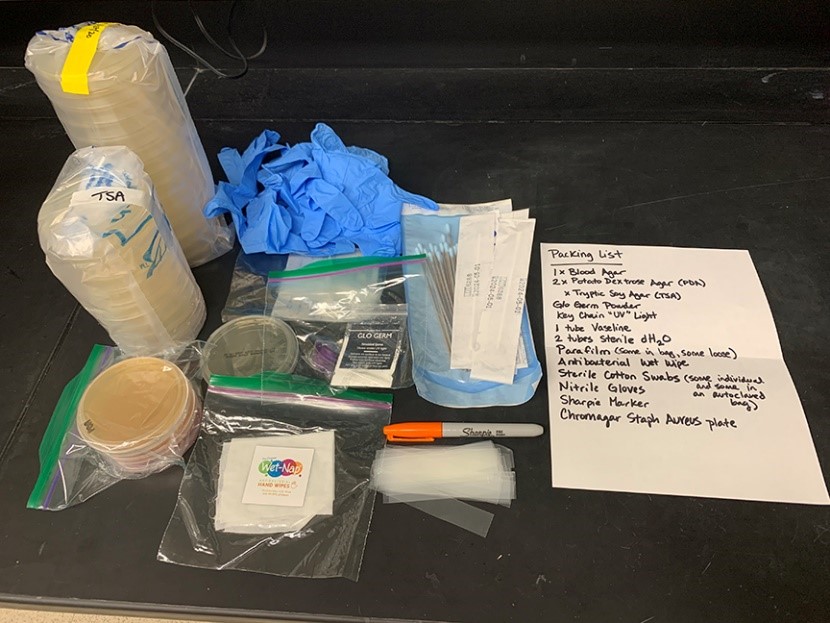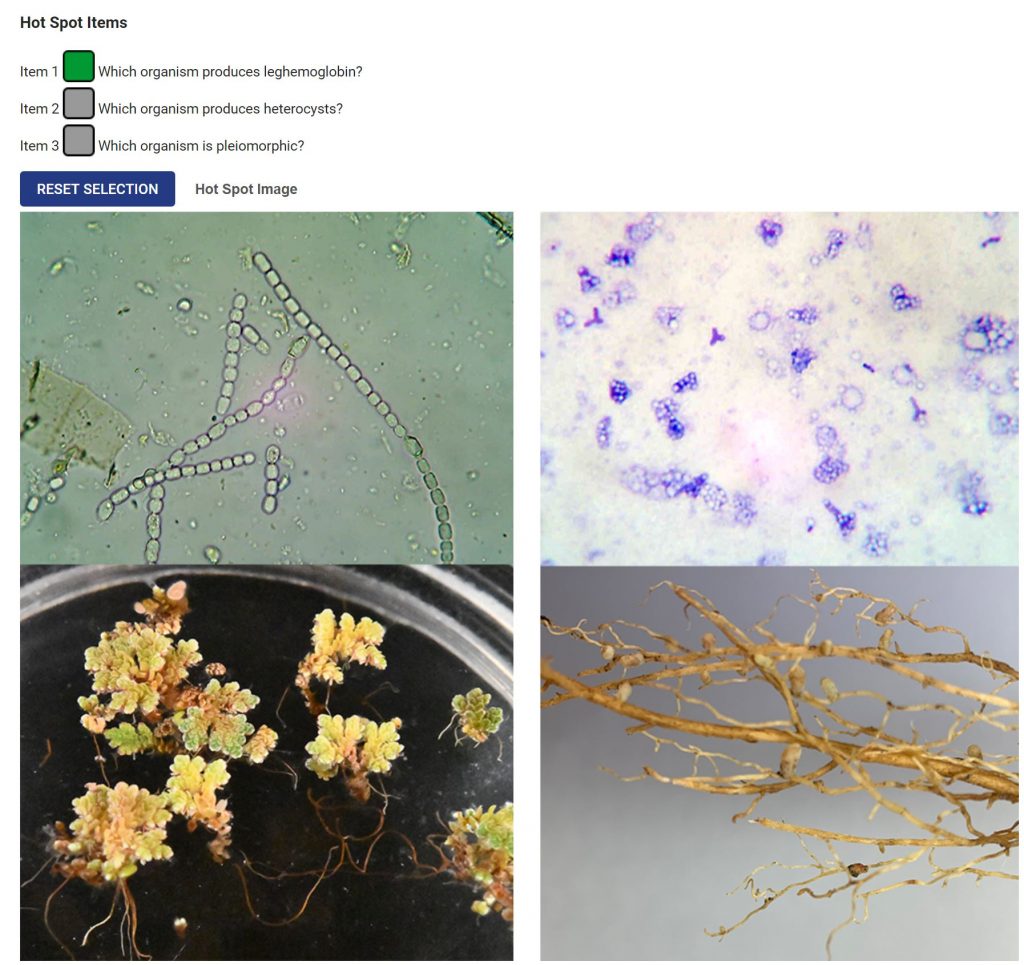Dr. Lindsay Saunders, Laboratory Administrator in Biology, is currently directing the laboratory for the course General Microbiology (Bio 212) with 34 students in two lab sections. When courses moved to remote learning, Dr. Saunders creatively considered different ways to meet the learning objectives for the labs.
She put together laboratory exercise kits for the students who were able to use them, instructing and requiring that the students use good safety procedures for decontamination and appropriate disposal. She and an assistant actually continued some experiments for the students so she could send them data and pictures. In addition, she offered more time for taking online quizzes, an additional quiz that could replace a low score on a previous quiz, and encouraged students to contact her if they are having any difficulties with the current situation.

The biggest challenge was the scheduled lab practical exam. Generally, lab practicals are set up with stations in a laboratory, where students rotate between the stations, each of which has a question, often about an item on the lab bench. This type of exam is timed, as students must rotate simultaneously to answer questions. Lab practicals are also highly visual, and may involve things like identifying a structure, a type of stain through a microscope, a problem with a preparation, reading biochemical test results and answering safety questions. In the General Microbiology laboratory, students have a 2 minute time limit per question before they move to the next station. Because students answer each question as an individual, the time limit is necessary to move students to the next station.
Dr. Saunders shared:
In brainstorming how to move this assessment to online learning, I have been thinking about where the value lies in this type of assessment and for all of my future physicians, dentists, veterinarians, scientists, nurses, etc. being able to process visual information quickly and accurately is an essential skill. I asked an online pandemic pedagogy group for insight and one commenter said, in our careers we can move back and forth between tasks and problems… so why not let your students do the same? My response is, because I’m supposed to be preparing most of them for medical school… because they WILL have practical exams in their future, because most of them have never had a practical exam and this is their only shot at one before professional school… and because health care providers don’t get to visit their patients in whatever order they choose and come back to the difficult patients later. Finally, I’m trying to keep this exam as close to the originally planned in person exam as I reasonably can because I’ve been preparing my students for it all semester. In everything we’ve done so far, we’ve reminded them this-or-that could be on the practical… you should be able to do this-or-that quickly. Changing too much now will also put stress on students that have been preparing for this all semester like we asked them to.
However, Dr. Saunders has taken into account that students are not actually physically present in the lab, and are under very different circumstances. She’s decided to use online assessments within Sakai:
…I will split this exam up into 3 assessments. I usually have 28 “stations” plus 2 ungraded “rest” stations but in this case I will make it 30 graded virtual “stations” and split them up into 10 stations per assessment. They would normally get 2 minutes per station and not be able to go backward, so in Sakai I will give them 40 minutes for each assessment containing 10 stations (double time built in for technical difficulties and to relieve stress during a pandemic) and do one question per page with no previous button so they can still only move forward. Then they can spend as much or as little time as they want for a break before starting the second and third assessments to complete the full exam so they are in control of their rest breaks.

Students will be given a brief, nongraded lab practical before starting the graded ones to identify any computer or software issues before they take the real lab practical.
